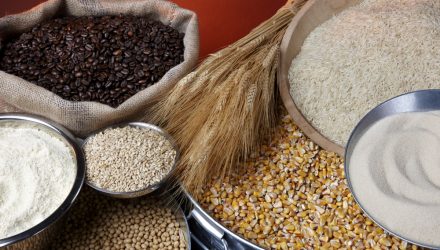The threat of a recession looming over the U.S. economy may have turned investors away from commodities. However, the tide could be turning in their favor based on trader activity in exchange traded funds (ETFs).
If that’s indeed the case, ETF investors looking to diversify their portfolios with commodities exposure can look to the Invesco Optimum Yield Diversified Commodity Strategy No K-1 ETF (PDBC). In terms of commodities exposure, the fund’s name says it all. The diversification speaks to 26 commodities holdings (as of August 2), including gasoline, oil, gold, and sugar — without the tax implications that come with the issuance of a K-1 form associated with commodities.
Investors may want to consider this, given the recent shift to commodities by traders as the Fed mulls over its interest rate policy for the rest of the year. Based on current trends, the threat of a recession could be falling to the wayside.
“Traders have piled into exchange-traded funds covering oil to metals and grains as investors wager that the global economy is set to avoid a painful recession, despite the prospect of higher interest rates,” a Bloomberg article published in Yahoo! Finance said, noting that inflows are on the rise as “More than $350 million was put into 20 ETFs that track broad-based commodity indexes in July, only the second month of inflows this year, according to data compiled by Bloomberg.”
It’s a stark contrast from the previous fourth months, as the article noted, which saw withdrawals from commodities funds.
“The past year has seen a mass exodus out of commodity index products due to fears of recession and falling inflation expectations,” said Ryan Fitzmaurice, lead index trader at commodities brokerage Marex Group Plc. “However, asset allocators have started rotating back into commodity index ETFs.”
Cross-Commodities Exposure in 1 Fund
With an expense ratio of 0.59%, PDBC offers cross-commodity exposure with an actively managed strategy. Active management allows for the fund managers to adjust holdings when market conditions warrant more exposure to a specific commodity and vice versa.
“The largest cross-commodity fund, Invesco Optimum Yield Diversified Commodity Strategy No K-1 ETF, continued to see inflows at the start of this month, taking in around $33 million on Aug. 1,” the Bloomberg article said.
In general, there are advantages to commodity investing: diversification, potential returns, and a hedge against inflation. However, investors must also understand the risks involved, such as volatility, international risks, and asset concentration.
For more news, information, and analysis, visit the Innovative ETFs Channel.








